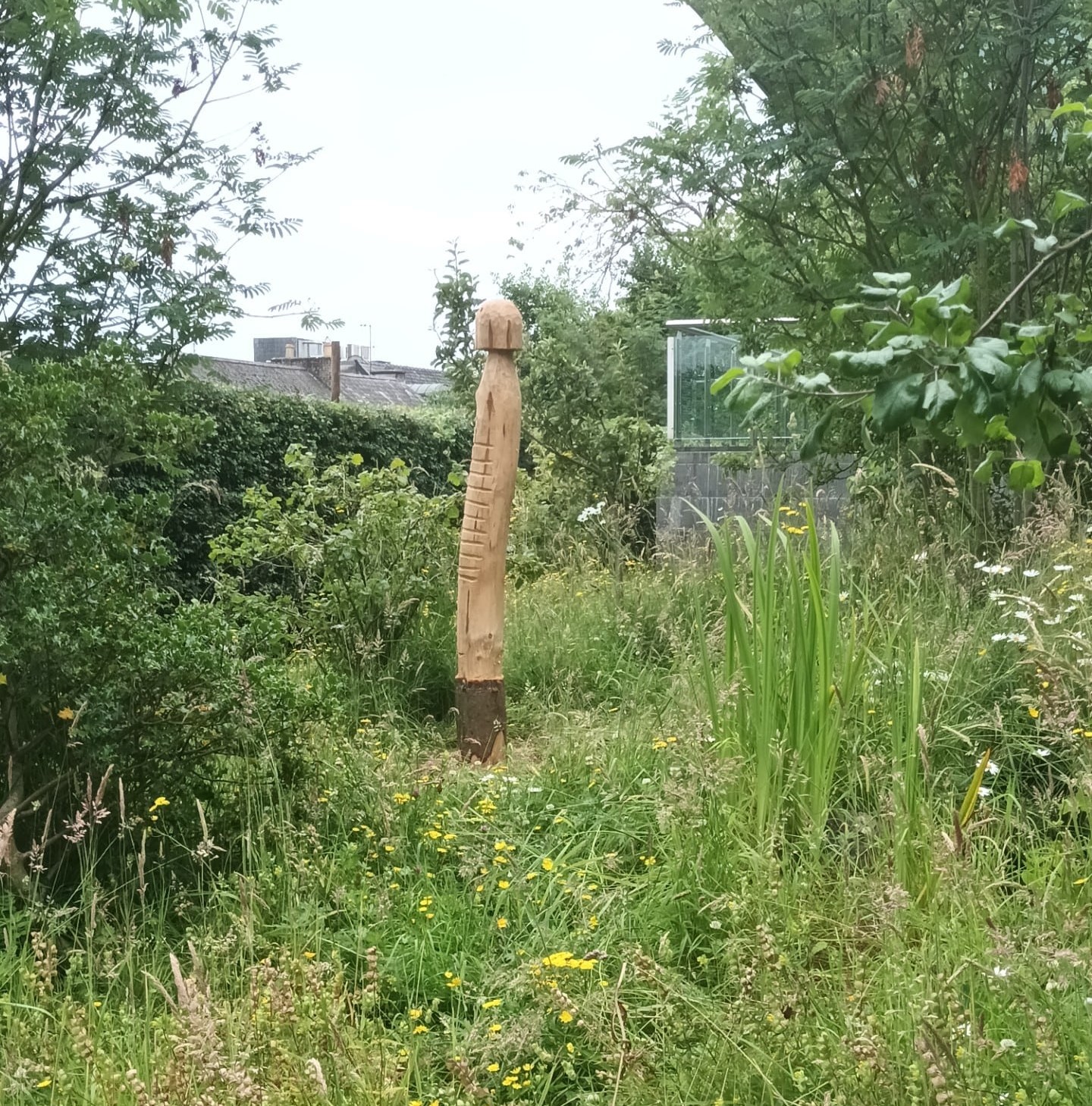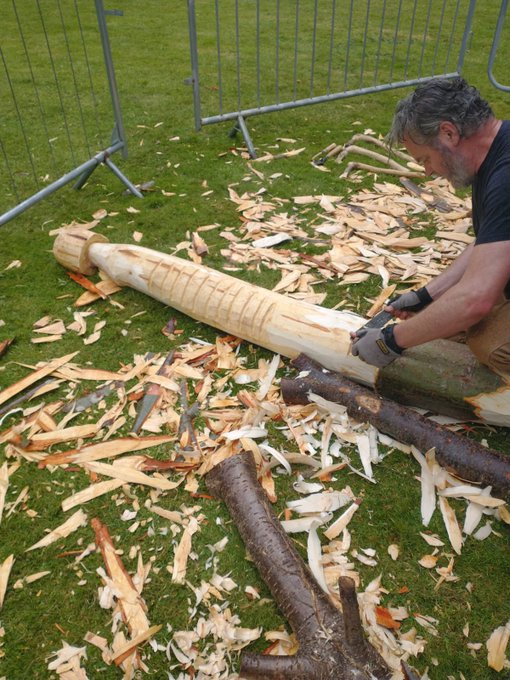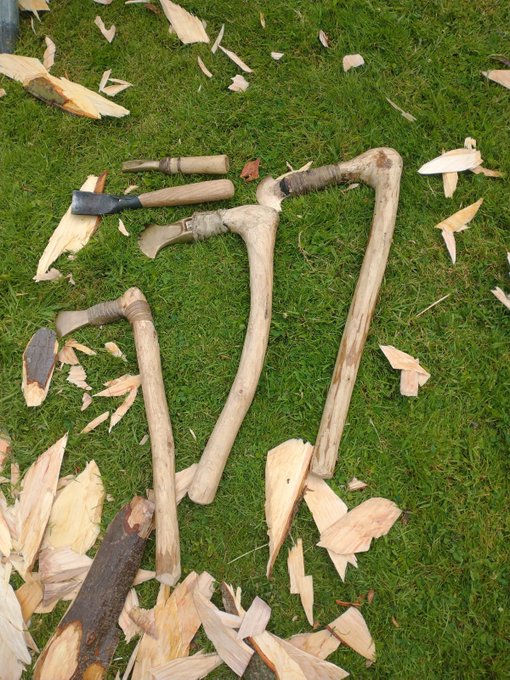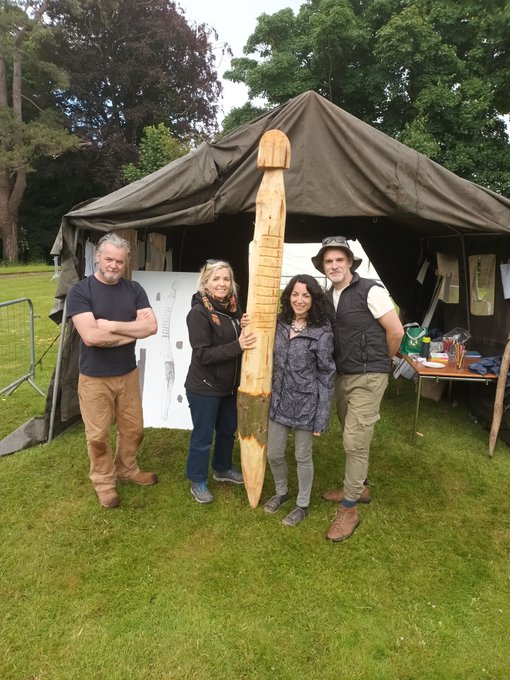In This Section
The Red Man Revisited: A second attempt to carve the Red Man of Kilbeg - Mark Griffiths

My first attempt at crafting the Red Man of Kilbeg, otherwise known as the Ballykean figure, is still a source of shame and disappointment to me.
Having had the opportunity to study the original at the Collections Resource Centre, Swords, it was clear the anthropomorphic figures' sensual, serpentine form, which followed the timbers' natural shape, was the essence of its power and beauty. With only a section of very straight timber to work with, my Red Man had all the character of a telegraph pole. It was a blessing when one stormy night it was ripped from its location on the banks of the river Lee and swept out to sea.

An invitation from The Heritage Council to craft another figure for an outreach day in Kilkenny was a welcome opportunity to put my first attempt behind me. The early morning sky across Kilkenny was clear and bright when I arrived at the grounds of the Heritage Council’s offices. Along with the other craftspeople and experts taking part that day I set to work arranging my workspace which was in front of a big old army tent. This was the first time, apart from photographs, that I had seen and touched the section of Alder wood sourced for the crafting.
Time spent running your hands and eyes over the timber before any blade is taken up is essential to read the character of the wood and try to anticipate how it will carve. Next comes the rough marking out, referencing notes and sketches, using a soft timber crayon, and a chance to step back for a final check before reaching to pick up the first axe.
As usual, the schedule would be tight, we were expecting the first groups of school children to arrive around ten o’clock that morning, and then planned to have a grand unveiling of the Red Man at two o’clock later that afternoon as the Heritage Day concluded. To have any chance of finishing on time I started at eight that morning, making quick work of stripping the Alder bark back to the fleshy timber. The bark was only removed from roughly three quarters of the log as with the original. This feature of exposed timber, then bark, then a large roughly hewn spike end always put me in mind of a mermaid’s tail.

As with previous projects, I used a combination of modern axes and chisels along with our excellent Bronze Age reproduction tools. The lovely soft creamy Alder wood put up little resistance to the axes and by ten o’clock, and the arrival of our first group of visitors, the figure was starting to take shape. A few light showers through the morning did nothing to dampen the enthusiasm of the children. As I worked on the carving, Ben, Cathy and Claire fielded the many questions from our spectators and invited them to produce their own interpretive artworks on the possible meanings of the Red Man.
It had been a while since I had worked with Alder and had forgotten the ease with which the timber can be shaped, even with our simpler replica Bronze and Iron tools. Soon the Red Man’s domed head and slender neck were finished and I moved on to the distinctive gouge marks on his right hand side. Numbering eleven in total, these notches, roughly 18mm x 100mm and 8mm deep, have been interpreted in many ways from exposed ribs to possibly marking events or time.
Only when recreating this deceptively simple figure does it become clear that its original maker had a range of bladed tools to hand. The removal of large sections of bark, which looks to have been stripped, shaping the head with its remarkably flat jaw or possibly hair line to the gouging out of the ribs all seem to have required different tools. As a woodworker I am mystified as to how the spiked tail section was shaped using the common small width of blade edge found at this time. In order to match the long wide facets found on the spiked tail I had to use my 1900 axe with its 20cm bladed edge, whereas the bronze axes 8cm blade edge produced a multitude of very small tool marks with very little resemblance to the cuts I had seen on the original. Given another opportunity, and a bit more time, I would like to experiment using wedges to split the timber to see if this in any way matches the original.

As the event drew to a close the team treated the children to a grand unveiling of the now completed Red Man. And as the sky darkened to an ominous grey the group drew in close and listened as Ben read out their various theories and stories, behind this mysterious figure that had so captured their imaginations.
You can learn more about the original 'Red man of Kilbeg or Ballykean figure here.
Irish Peatland Archaeology Across Time (IPeAAT)
Contact us
